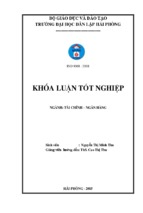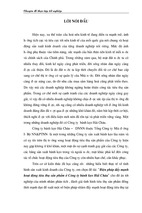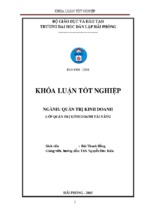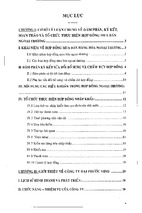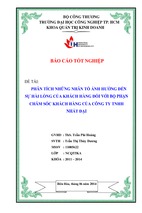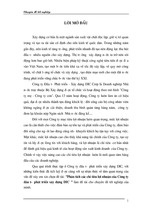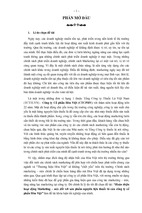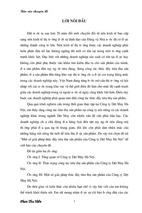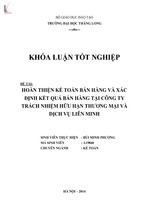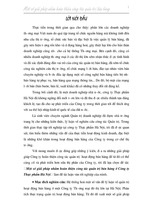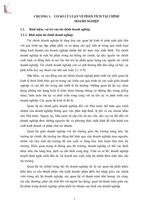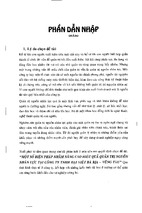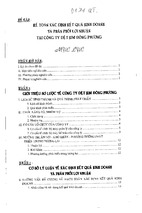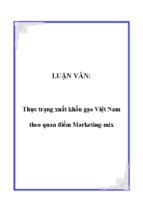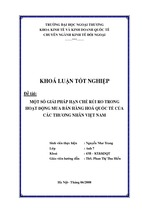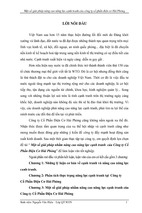ial
Sp ecue
Iss
I d e a s w i t h I m pa c t
January 2004
Inside
theMind
of the
Leader
Warren G. Bennis
The Seven Ages
of the Leader
Manfred F.R.
Kets de Vries
Putting Leaders
on the Couch
Plus:
Daniel Goleman
Andrea Jung
Colleen Barrett
Abraham Zaleznik
Barbara Kellerman
David Gergen
and more
Contents
January 2004
Inside the Mind of the Leader
10
FROM THE EDITOR
40
The Leader’s Secret Self
When there’s dissonance between an executive’s inside
and outside, he’s got trouble. It’s absolutely essential to
keep the two aligned.
15
HBR CASE STUDY
62
S T R AT E G I C H U M O R
111
EXECUTIVE SUMMARIES
116
IN CLOSING
Left on a Mountainside
Julia Kirby
The Highway of the Mind
Ed Davidson feels like he’s made it. He’s a first-time
delegate to the World Economic Forum in Davos,
and he’s on track to be his company’s next CEO.
Then he gets a phone call that changes everything.
Thomas A. Stewart
Businesspeople tend to be extroverts,
taking a lively interest in others and
preferring action to introspection.
But to be fully effective as leaders, they
must learn to navigate the twists and
turns of their emotions and those of
the people around them.
continued on page 8
15
27
27
VOICES
Leading by Feel
Using emotional intelligence naively or maliciously can
be as harmful as not using it at all. Take it from these 18
business leaders, scholars, and other experts, who describe
how to cultivate and manage emotional intelligence.
40
T H I N K I N G A B O U T. . .
Leadership – Warts and All
Barbara Kellerman
It’s high time we recognized that leadership is not a
moral concept. We have as much to learn from the
Dennis Kozlowskis and Howell Raineses of the world
as we do from their more benevolent counterparts.
116
6
harvard business review
Contents
Best of HBR
74 Managers and Leaders:
Are They Different?
January 2004
46
Abraham Zaleznik
The process for developing managers is
not the same as the one for developing
leaders, so the wise organization refrains
from imposing uniform expectations on
its people.
F e at u r e s
46 The Seven Ages of the Leader
82 What Makes a Leader?
Warren G. Bennis
Daniel Goleman
The leader’s life is a series of mind-bending challenges
and gut-wrenching crises. Knowing what to expect at
each stage of the journey can help you get through.
Organizations often implicitly discourage
their people from cultivating emotional
intelligence. Its chief components – selfawareness, self-regulation, motivation,
empathy, and social skills – can be learned,
but it’s not easy. The benefits for both the
individual and the organization make it
worth the effort.
54 When Followers Become Toxic
Lynn R. Offermann
Have you ever had to deal with a determined corporate
Iago? Or worse, a group of them? Some subordinates
can seriously interfere with your ability to lead. Here’s
how to spot – and manage – those who might get you
into trouble.
92 Narcissistic Leaders:
The Incredible Pros,
the Inevitable Cons
Michael Maccoby
When a company needs a leader with daring, courage, and vision, there’s nothing
like a narcissist. But the flaws in these
larger-than-life figures can be critically
dangerous to the companies they run. Narcissists who have the courage to confront
their own weaknesses can rise above the
limits of their own personalities.
54
92
102 Understanding Leadership
W.C.H. Prentice
64 Putting Leaders on the Couch:
A Conversation with Manfred F.R. Kets de Vries
Diane L. Coutu
No leadership scholar has explored the CEO’s mind
as deeply as psychoanalyst, author, and educator
Manfred F.R. Kets de Vries. In that strange landscape,
he’s discovered echoes of parental voices, incipient
existential crises, and, in the best cases, a kind of
healthy madness.
8
Why is it that we rely on intuitive skills
when dealing with family and friends but
set those skills aside when we put on the
mask of “manager” at the office? Great
leadership is a deeply human achievement
that requires insight into how employees’
needs and desires can be harnessed to
further the organization’s goals.
harvard business review
FROM THE EDITOR
The Leader’s
Secret Self
10
learned? Can you have too much?
How can a person compensate
for weakness in emotional intelligence? We explore these questions
and more with Goleman and over
a dozen other well-known experts –
among them, a neurologist, several
CEOs, and an expert on cults. Their
answers are fascinating and important. Every leader ought to want
a more supple emotional intelligence, and “Leading by Feel,”which
starts on page 27, is a great place
to begin.
Every leader ought to be thinking about his or her own
leadership development, too, and who better to talk about
the process of becoming a leader than the man who wrote
the book on the subject, Warren Bennis. The title of Bennis’s
article,“The Seven Ages of the Leader,” may sound familiar:
He has framed his discussion of how leaders grow by
appealing to the “seven ages of man” speech from Shakespeare’s As You Like It, the one that begins “All the world’s
a stage.” (Freud himself often looked to Shakespeare for an
understanding of human nature.) That framing was a smart
choice, because the Bard understood theater as well as psychology, and one of the biggest challenges leaders face is
understanding how their feelings “play” on the public stage
they occupy.
There’s much more in this issue. Barbara Kellerman examines the taboo subject of malign leaders. Lynn Offermann presents a provocative piece on the sometimes toxic
effects followers can have on leaders. And by all means, dig
into Diane Coutu’s interview with Kets de Vries, a psychoanalyst and Insead professor who has devoted his career to
analyzing CEOs. He says surprising things about how many
CEOs suffer from depression and anxiety and struggle with
control issues. He also offers a wise and hopeful description
of the truly healthy leader – intense, passionate, responsible – the kind of leader we want to have, the kind of leader
we want to be.
CAREY SOOKOCHEFF
S
pecial issues of HBR give
us the chance to explore a big
subject in two dimensions:
first, across space, with a gathering
of new articles ranged around the
subject in an illuminating way; and
second, across time, with a republication of the very best articles from
HBR’s past – frequently the articles
that helped define the topic in the
first place.
The subject at hand is leadership – in particular, the psychology
of leadership. Academic leadership
studies grew out of historians’“great man” theories, which
explain events by examining the role of highly influential
individuals. George Washington is perhaps the archetype of
the great man in American history. In portraits, great men
(and a few women) are heroic, larger than life; often they’re
on horseback. Their strength and vision inspire us. We don’t
know much about what they feel, however. We don’t know
their doubts or their secrets. We view these leaders from the
outside.
This issue of HBR is about the leader’s inner life. Intellectually, the issue grows from a different tradition, but one
that is roughly contemporaneous with “great man” theories: the study of psychology, which begins in the second
half of the nineteenth century with figures like William
James and Wilhelm Wundt. Psychology found its own great
men in Sigmund Freud and Carl Jung and worked its way
into business through such people as Abraham Maslow,
Harry Levinson, and, more recently, Manfred F.R. Kets de
Vries. If Washington symbolizes the leader’s outward face,
let Abraham Lincoln stand for his inner being – ambiguous,
doubtful, and brooding. Even in photographs, we see Lincoln from within: The lineaments of his soul are etched on
his skin.
A leader gets into trouble when there’s dissonance between the inside and outside – what today we’d call a “disconnect.” If a single theme runs through this issue, it’s the
importance of keeping the two aligned. Take, for example,
the issue of emotional intelligence – a term first brought
to the business mainstream in Daniel Goleman’s classic 1998
HBR article “What Makes a Leader?” reprinted here. We’ve
all known leaders with highly developed intellects but
stunted emotions – and, wonderfully, leaders who bond with
others in profound ways. But can emotional intelligence be
Thomas A. Stewart
harvard business review
editor
Thomas A. Stewart
deputy editor
Karen Dillon
executive editor
Sarah Cliffe
art director
Judi Tomlinson
STANFORD
GRADUATE SCHOOL OF BUSINESS
EXECUTIVE EDUCATION
Experience Stanford Executive Education and gain timetested strategies for collaborating effectively with colleagues
and applying the power of your personal influence to achieve
organizational success.
SELECTED 2004 EXECUTIVE PROGRAMS
Negotiation and
Influence Strategies
April 4 – 9 and October 17 –22
Managing Teams for
Innovation and Success
June 6 – 11
Advanced Negotiation
Program
April 18 – 23
Executive Program in
Leadership: The Effective
Use of Power
July 11 – 16
Corporate Governance
Program
June 1 – 4
senior
production
manager
Dana Lissy
associate
art director
Karen Player
associate
production
manager
Christine Wilder
associate
editor
Eileen Roche
senior designers
Aimee Bida
Jill Manca
consulting
editor
Louise O’Brien
design/production
coordinator
Heather Barrett
executive editor
manuscript
and director
editors
of derivative
Christina Bortz
products
Roberta A. Fusaro
Jane Heifetz
Margaret K. Hanshaw
editorial
Andrew O’Connell
coordinators
Andrea Ovans
Kassandra Duane
Suki Sporer
Andrew Gray
communications
contributing
manager
staff
Cathy Olofson
Amy L. Halliday
editor for
Amy N. Monaghan
business
development
John T. Landry
editor-at-large,
harvard business school publishing
Walter Kiechel
a note to readers
The views expressed in articles are
the authors’ and not necessarily those of
Harvard Business Review, Harvard Business
School, or Harvard University. Authors may
have consulting or other business relationships
with the companies they discuss.
www.gsb.stanford.edu/exed
866.542.2205 (toll free, U.S. and Canada only) or 650.723 .3341
Stanford, California
CHOOSE STANFORD EXECUTIVE EDUCATION FOR PROGRAMS IN:
General Management Financial Management Leadership and Strategy Marketing
Negotiation Technology and Operations Nonprofit and Philanthropy Custom Programs
CHANGE LIVES, CHANGE O RGANIZATIONS, CHANGE
senior editors
Leigh Buchanan
David Champion
Diane L. Coutu
Bronwyn Fryer
Ben Gerson
Paul Hemp
Julia Kirby
Gardiner Morse
Ellen Peebles
Anand P. Raman
THE
WORLD
submissions
We encourage prospective authors
to follow HBR’s “Guidelines for Authors”
before submitting manuscripts. To obtain a
copy, please go to our Web site at www.hbr.org;
write to The Editor, Harvard Business Review,
60 Harvard Way, Boston, MA 02163; or send
e-mail to
[email protected].
Unsolicited manuscripts will be returned
only if accompanied by a self-addressed
stamped envelope.
editorial offices
60 Harvard Way, Boston, MA 02163
617-783-7410; fax: 617-783-7493
www.harvardbusinessonline.org
Volume 82, Number 1
January 2004
Printed in the U.S.A.
n
io ,
at ide
c
u w
Ed ld
e or 03
v
i
W 0
ut r –2
ec ide 00
x
v
0
E ro 2
P
publisher
Cathryn Cronin Cranston
circulation
fulfillment
manager
Heather McCormick
business
director
Edward D. Crowley
direct marketing
manager
Bruce W. Rhodes
manager,
marketing and
operations
Marisa Maurer
#1
senior business
analyst
Adrienne M. Spelker
advertising
production
manager
Catharine-Mary
Donovan
assistant
subscriber
services manager
Elizabeth Sottile
assistant
advertising
manager
Ashley C. Hartmann
Learning that
Powers Performance®
worldwide advertising offices
advertising director – worldwide
Trish Henry
212-872-9283
New York Maria A. Beacom
Michael J. Carroll
James H. Patten
509 Madison Ave.
15th Floor
New York, NY 10022
212-872-9280;
fax: 212-838-9659
Atlanta
Boston
Chicago
Dallas
Detroit
Los Angeles
San Francisco
Australia
Beijing
France
Hong Kong
India
Japan
Korea
Malaysia
Singapore
Sweden
Taiwan
United Kingdom
404-256-3800
978-287-5400
312-575-1100
214-521-6116
248-524-9000
310-207-4399
415-986-7762
612-9954-3288
86-10-6401-9190
33-01-4643-1630
852-2516-1001
912-2204-8890
81-3-3479-6131
82-2-3702-1790
603-7729-6923
65-6-836-2272
46-8-541-318-37
886-2-2364-9108
44-20-7586-2224
For advertising contact information,
please visit our Web site at
www.hbradsales.com.
subscription service information
u.s. and canada
800-274-3214; fax: 641-842-6101
Rates per year: U.S., $118; Canada, u.s.$128
international
44-1858-438868; fax: 44-1858-468969
Rates per year: u.s.$165; Mexico, u.s.$128
subscribe online
www.hbr.org
Columbia Executive Education
We set the
global standard for success—for individuals and organizations.
Cutting-edge program designs and an active learning approach create
a
results-oriented environment
unmatched in the world. Our
commitment to our clients’ needs has helped us to achieve the
in executive education for
#1 ranking
four consecutive years
Times, 2000–2003). We give you the ideas and tools you need to
power your performance.
UPCOMING COURSES
Finance and Accounting for the
Nonfinancial Executive
[March 29–April 2]
Leading Strategic Growth and Change
[May 2–7]
Executive Development Program: The
Transition to General Management
[May 2–14]
Negotiation and Decision-Making
Strategies [May 11–13]
Creating Breakthrough Strategy
[June 6–11]
High Impact Leadership (formerly
known as Leading and Managing
People) [June 6–11]
Fundamentals of Management:
Highlights of an MBA [June 13–25]
The Columbia Senior Executive
Program [June 27–July 23]
reproduction
Copyright © 2003 Harvard Business School
Publishing Corporation. All rights reserved.
No part of this publication may be reproduced
or transmitted in any form or by any means,
electronic or mechanical, including photocopy,
recording, or any information storage and
retrieval system, without written permission.
(Financial
W W W. G S B . C O L U M B I A . E D U / E X E C E D
800-692-3932 | 212-854-3395
HBR CASE STUDY
Left on a
Mountainside
by Julia Kirby
Ed Davidson is at Davos when he hears that his CEO is not naming
him president. But Ed knows a nasty secret that could ruin the
CEO’s reputation – should he use it to try to salvage his career?
B
DANIEL VASCONCELLOS
rilliant sunshine and brittle cold
snapped Ed Davidson awake as he
emerged from Zurich Airport, trailing
the limousine driver who moments before had
met him at the security checkpoint. After being
hermetically sealed in a jumbo jet for hours,
focused on a laptop, some analyst reports, his
cluttered tray table – nothing more than a few
yards away – he shielded his watering eyes. But
by the time he reached the car, he was grinning
broadly. The skier in him rejoiced at the January
air and the prospect of six days in the Alps. He
ducked into the backseat, pushing his briefcase
ahead of him. He was on his way to Davos.
Not that he would be skiing much. Other
than on the scheduled “sports day” on Sunday,
participants at the World Economic Forum’s annual conference were facing a packed schedule
of sessions, receptions, and dinners. Ed pulled
out his conference folder and glanced over the
program again. His attention alternated between the scenery outside his window and the
people with whom he would soon be mingling.
His mother had been awed on the phone the
evening before, hearing him rattle off name
after name familiar to her from the news and
gossip columns. “Eddie,” she’d said, “this is my
dream come true for you. I’m pinching myself!”
HBR’s cases, which are fictional, present common managerial dilemmas
and offer concrete solutions from experts.
INSIDE THE MIND OF THE LEADER
january 2004
15
HBR CASE STUDY
He smiled to recall it, then quickly composed his
features. Jutting his jaw slightly forward, he reminded himself that these people were no more
than his peers. Soon enough, anyway.
Two hours into the drive, a loud crack by Ed’s
right ear jolted him from the doze he had
drifted into. He sat up and turned his head toward the noise, only to be thrown off balance as
the car accelerated. “Very sorry, sir,” said the
driver, catching sight of Ed’s surprised expression in the rearview mirror. “Antiglobalization
protesters. We are just a few minutes from the
checkpoint.” Ed turned to stare out the back of
“Let me get this straight.” Lucy peered
at Ed. “David Paterno promised you
this position? And now he’s reneging?”
the car and saw the rock thrower taking aim at
another black sedan behind them. Then it occurred to him to look forward. Through the
windshield he saw the cluster of black-costumed
activists the driver was hoping to blow past.
His phone rang. Annoyed at the start it gave
him, Ed rooted his phone out of his briefcase
and snapped it open. It was Frank Maugham
calling. Normally, this would have been welcome. Frank was CFO and a board member at
Carston Waite, and he had been a mentor to Ed
for most of the 14 years since Ed joined the
company. It wouldn’t have been unusual for
Frank to call on some routine matter or just to
chat; they had become that close. But Ed immediately detected the note of anxiety in Frank’s
greeting and knew there was something afoot.
“It’s a setback, I’m afraid,” Frank explained.
“David just spoke with me. He asked me to let
you know you are not going to be named president of Carston Waite.” He paused.“At least not
yet. He’s planning to make an announcement
that he’s not appointing anyone for a while.”His
voice took on a sardonic tone.“He wants to stay
close to the business.”
Ed’s mind was a blank – the news had hit him
almost with the force of a physical blow – then
he gradually became conscious of the heat rising in his cheeks and forehead. His hand with
the phone in it had slipped down from his ear.
Julia Kirby is a senior editor at HBR and can be
reached at
[email protected].
16
Le f t o n a M o u n ta i n s i d e
He jerked it back up when he heard Frank’s
voice again, saying,“Are you there?”
But now the car was caught up in a swirl of
agitated humanity. As the car inched forward,
protesters dressed in outrageous costumes and
carrying hand-lettered signs pressed toward it,
a few getting close enough, despite the efforts
of armed Swiss guards, to leer disconcertingly
into the windows. Ed could hear their chants
through the thick glass. He looked around
wildly, then gripped the phone tighter. “Look,
Frank. This is a bizarre moment. Can I call you
right back? I’m almost at the hotel.”
“Yes, absolutely. Get settled in. But first, just
know that I have a plan,” Frank said. “I’m going
to call around to the rest of the board members
and see if we can’t prevail upon David to change
his mind.”
“You really think that could work?” Ed tried
to focus.
“Who could argue with the wisdom of having
a succession plan? And who else but you could
the successor be?”
The car lurched forward and passed through
a gate in a high chain-link fence. The driver
glanced back and raised his eyebrows expectantly. It was time for Ed to produce his passport
and conference pass for inspection. “I’ll call
you,” Ed said to Frank and shoved the phone
back into his briefcase.
Magic Mountain
Some hours later, realizing he was hungry, Ed
quickly shaved, dressed for dinner, and found
his way to the Kongress Center, where the inaugural reception was already in high gear. The
room was a sea of gesticulating people, chattering in accented English or no English at all.
Waiters moved smoothly among them, trays
laden with wineglasses and hors d’oeuvres, as
a full orchestra played Berlioz. Ed spied a row of
white-clothed tables and began working his way
toward it.
“Edward Davidson! Well, I’ll be damned.”
Ed looked toward the voice and was amazed
to see his old B-school section mate, Lucy Keh.
Lucy had made her millions in a dot-com that
went public, then had gone on to found a nonprofit organization. They’d long ago fallen out
of touch, but Ed occasionally spotted her name
in the news. Now she was breaking away from
the group she’d been talking with and coming
toward him, her arms extended for a hug.
harvard business review
HBR CASE STUDY
There was no one like Lucy. Back in school,
she’d been brilliant, but she was also the one
who made you feel brilliant. She’d bring homemade brownies to study sessions. She’d read
Greek dramas – in the original Greek, no less –
to unwind. She’d remember your kid brother’s
name. She was fiercely loyal.
Almost before he realized what was happening, Ed was outside the ballroom, glass in hand,
admitting to Lucy how he had that day been
betrayed.
“Let me get this straight.” Lucy peered at Ed.
“David Paterno promised you this position?
And now he’s reneging?”
Ed filled in the details. A year ago, Carston
Waite’s longtime chairman and CEO, Tom Tyrakowski, had announced he was leaving, and a
18
three-way contest among internal candidates
for the spot had moved quickly into high gear.
The timing wasn’t ideal, from Ed’s standpoint.
A few years later and he might have had a fair
shot at the job himself. As it was, he couldn’t
compete, despite his reputation as a rising star.
And neither was Frank in the running.
Already 60, Frank had made his own play for
the job many years earlier – and done penance
for it. The man who had beat Frank out for the
job had promptly exiled him to one of the company’s most marginal divisions and left him
running it for a good long time before letting
him come in from the cold. Frank was a survivor,
all right, and at this point he had real influence.
He had seen it all, and he knew where the bodies were buried.
harvard business review

